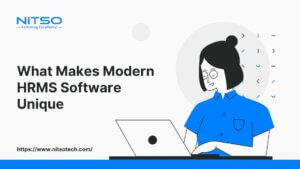Are you struggling to find the right talent for your Indian business? In today’s rapidly evolving job market, the approach you take to hiring can significantly impact your company’s success. Traditional hiring methods, such as paper-based resumes and in-person interviews, have been the norm for decades. However, with the advent of technology and changing workforce dynamics, modern hiring techniques like online job boards, social media recruiting, and AI-powered screening have gained popularity. Which approach Traditional vs Modern Hiring is right for your business?
The answer lies in understanding the unique needs of your organization. Traditional hiring methods excel in assessing candidates’ interpersonal skills and cultural fit, while modern techniques offer efficiency, a wider talent pool, and data-driven insights. According to a recent study by Naukri.com, 72% of Indian employers reported facing challenges in attracting and retaining top talent, highlighting the importance of an effective hiring strategy.
Content On This Page
What Is the Traditional Hiring Approach?
The traditional hiring approach has been the go-to method for businesses across India for decades. This approach typically involves paper-based resumes, in-person interviews, and reference checks. One of the key advantages of this method is the personal interaction it provides. Face-to-face interviews allow employers to assess candidates’ communication skills, body language, and overall personality, which can be invaluable in determining a suitable cultural fit.
Furthermore, traditional hiring processes are well-established and widely understood, making them a familiar and comfortable choice for many employers. This familiarity can be particularly appealing for businesses operating in more traditional industries or those with long-standing hiring practices.
However, the traditional approach is not without its drawbacks. One significant challenge is that it can be time-consuming, with the process often extending from advertising vacancies to conducting multiple rounds of interviews. Additionally, relying solely on local talent pools can limit the reach and diversity of potential candidates, potentially causing organizations to miss out on exceptional talent from other regions or countries.
Moreover, traditional hiring methods are susceptible to human biases and discrimination, whether intentional or unconscious. Factors such as appearance, accent, or personal connections can influence hiring decisions, undermining the objectivity of the process.
What Is the Modern Hiring Approach?
In contrast to traditional methods, the modern hiring approach leverages technology and digital platforms to streamline and enhance the recruitment process. This approach often involves online job boards, social media recruiting, video interviews, and AI-powered screening tools.
One of the primary advantages of modern hiring is its ability to provide a wider reach, enabling businesses to access a global talent pool. By leveraging online platforms, employers can attract candidates from diverse backgrounds and locations, increasing the likelihood of finding the perfect fit for their organization.
Additionally, modern hiring techniques offer efficiency through automation and streamlined processes. AI-based screening tools can quickly analyze vast numbers of applications, identifying the most promising candidates based on predefined criteria. Video interviews eliminate the need for in-person meetings during the initial stages, saving time and resources for both employers and candidates.
Furthermore, modern hiring approaches often provide data-driven insights into candidate fit and potential performance. By analyzing various data points, such as social media profiles, online assessments, and video interviews, employers can gain a more comprehensive understanding of a candidate’s skills, personality, and potential contributions to the organization.
However, the modern approach is not without its challenges. One concern is the potential for a more impersonal experience, as the lack of face-to-face interaction can make it harder to assess a candidate’s cultural fit and interpersonal skills. Additionally, not all candidates may be comfortable with or have access to the required technology, potentially creating barriers and limiting the applicant pool.
What Is the Difference Between Traditional vs Modern Hiring?
Here’s a table comparing the traditional and modern hiring approaches:
| Aspect | Traditional Hiring | Modern Hiring |
|---|---|---|
| Process | Paper-based resumes, in-person interviews, reference checks | Online job boards, social media recruiting, video interviews, AI-powered screening |
| Reach | Limited to local talent pool | Access to global talent pool |
| Efficiency | Time-consuming process with multiple rounds of interviews | Streamlined through automation and technology |
| Candidate Assessment | Focused on personal interaction, communication skills, and cultural fit | Data-driven insights from online profiles, assessments, and video interviews |
| Key Advantage | Personal touch: Face-to-face interactions allow for better assessment of interpersonal skills and cultural fit | Wider reach and efficiency: Ability to access a global talent pool and streamline the process through technology |
| Main Disadvantage | Limited reach and potential biases: Reliance on local talent pool and susceptibility to human biases in the selection process | Impersonal experience and technology barriers: Lack of personal interaction and potential technology barriers for some candidates |
| Suitable For | Industries or roles that prioritize personal interaction and cultural fit | Companies seeking a larger talent pool and a more efficient hiring process |
| Potential Risks | Missing out on exceptional talent from other regions, discrimination due to human biases | Perpetuating existing biases through AI tools, overlooking interpersonal skills |
This table provides a side-by-side comparison of the key aspects of traditional and modern hiring approaches, highlighting their respective processes, advantages, disadvantages, suitability, and potential risks. It allows for a clear understanding of the differences between the two approaches and can help businesses make an informed decision based on their specific needs and requirements.
What Factors Should You Consider When Choosing a Hiring Approach?
When choosing between traditional and modern hiring approaches, it’s crucial to consider several factors that are unique to your business:
- Company Culture and Values: Evaluate whether your company culture aligns more with the personal touch of traditional methods or the efficiency and data-driven nature of modern techniques.
- Industry and Job Requirements: Certain industries or roles may necessitate a more hands-on approach, while others may benefit from the scalability and reach of modern hiring methods.
- Budget and Resources: Traditional hiring can be more resource-intensive, while modern approaches often require an upfront investment in technology and training.
- Candidate Experience: Consider the preferences and expectations of your target talent pool, as well as the potential impact of your hiring process on your employer brand.
- Legal and Ethical Considerations: Ensure that your hiring practices comply with relevant laws and regulations, and prioritize fairness, diversity, and inclusivity.
Is a Hybrid Approach the Best Solution?
In many cases, the most effective strategy may be to adopt a hybrid approach that combines elements of both traditional and modern hiring methods. This approach allows businesses to leverage the strengths of each method while mitigating their respective weaknesses.
For example, you could use modern techniques like online job boards and AI-powered screening to identify a pool of qualified candidates, and then incorporate traditional in-person interviews to assess cultural fit and interpersonal skills for the final selection.
By tailoring a hybrid approach to your specific needs, you can create a hiring process that is efficient, inclusive, and aligned with your organizational goals and values.
It’s important to note that no single approach is universally suitable for all businesses. The key is to regularly evaluate and adapt your hiring practices to ensure they remain effective and responsive to changing market conditions, technological advancements, and evolving workforce dynamics.
Conclusion
In the dynamic Indian job market, the choice between traditional and modern hiring approaches is not a one-size-fits-all solution. Each approach offers distinct advantages and disadvantages, and the right balance is crucial for attracting and retaining top talent.
As a business owner or HR professional, it’s essential to evaluate your company’s culture, values, industry requirements, and resources to determine the most suitable hiring strategy. Embracing a hybrid approach that combines the strengths of both traditional and modern methods can provide the best of both worlds, tailoring the process to your specific needs.
Remember, effective hiring is an ongoing process that requires continuous evaluation and adaptation. By staying up-to-date with the latest trends and best practices, and regularly assessing your hiring process, you can ensure that your business remains competitive in attracting and retaining the right talent for long-term success.
Article you might be interested in How Can Modern Recruitment Strategies Transform Your Company?








0 Comments